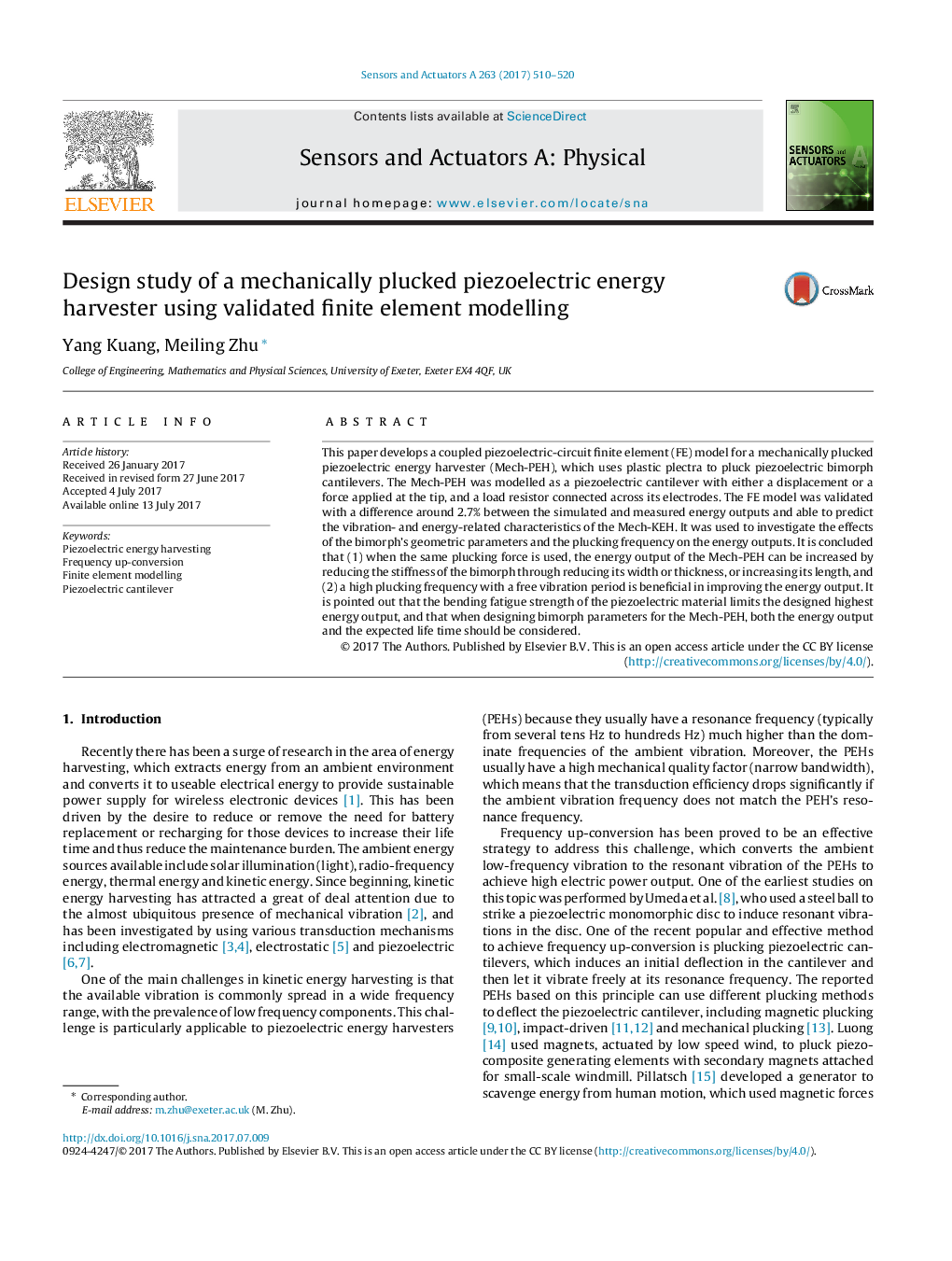| Article ID | Journal | Published Year | Pages | File Type |
|---|---|---|---|---|
| 5008090 | Sensors and Actuators A: Physical | 2017 | 11 Pages |
â¢A coupled piezoelectric-circuit finite element model is developed for energy harvesting.â¢Plucked piezoelectric cantilevers for energy harvesting are simulated by the FE model.â¢The parameters that affect the electric energy output are studied by the FE model.â¢The simulation results are validated by experiment.â¢The simulation results provide design guidance for similar energy harvesters.
This paper develops a coupled piezoelectric-circuit finite element (FE) model for a mechanically plucked piezoelectric energy harvester (Mech-PEH), which uses plastic plectra to pluck piezoelectric bimorph cantilevers. The Mech-PEH was modelled as a piezoelectric cantilever with either a displacement or a force applied at the tip, and a load resistor connected across its electrodes. The FE model was validated with a difference around 2.7% between the simulated and measured energy outputs and able to predict the vibration- and energy-related characteristics of the Mech-KEH. It was used to investigate the effects of the bimorph's geometric parameters and the plucking frequency on the energy outputs. It is concluded that (1) when the same plucking force is used, the energy output of the Mech-PEH can be increased by reducing the stiffness of the bimorph through reducing its width or thickness, or increasing its length, and (2) a high plucking frequency with a free vibration period is beneficial in improving the energy output. It is pointed out that the bending fatigue strength of the piezoelectric material limits the designed highest energy output, and that when designing bimorph parameters for the Mech-PEH, both the energy output and the expected life time should be considered.
